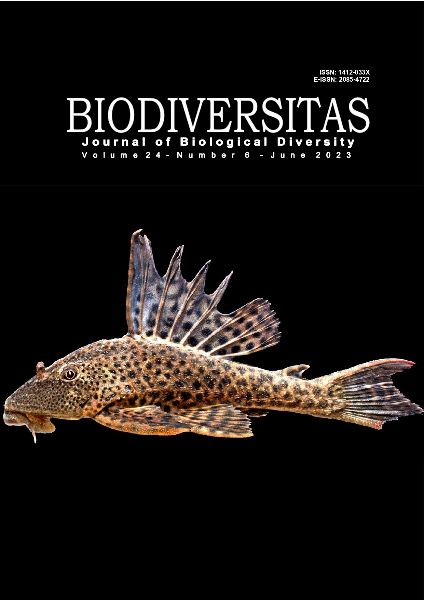Identification of bacterial isolates of Tumpang and Bumiasri (East Java, Indonesia) using 16S rRNA gene sequencing and screening of their active compounds as a biofertilizer
##plugins.themes.bootstrap3.article.main##
Abstract
Abstract. Prihartin I, Ismail AS, Sukorini H, Nursandi F, Zakia A, Farahdina FAR. 2023. Identification of bacterial isolates of Tumpang and Bumiasri (East Java, Indonesia) using 16S rRNA gene sequencing and screening of their active compounds as a biofertilizer. Biodiversitas 24: 3338-3343. The objective of the study was to identify Tumpang (TPG) and Bumiasri (BAS) isolates using 16S rRNA gene sequencing and screen-on biofertilizer active-compounds. Research materials used in the study were bacterial isolates of TPG isolated from Tumpang area and BAS isolated from Bumiasri area, East Java, Indonesia. The variables observed was isolate identification using 16S-rRNA gene and screen for active compounds for biofertilizer using liquid chromatography tandem-mass spectrometry (LC-MS/MS-QTOF). The biofertilizer composed of mineral mix (P, K, Fe, Mg and S), rice-straw extract, water and TPG isolate as C1 Biofertilizer and BAS as C2 Biofertilizer. The sequencing results of TPG isolates obtained DNA sequences that resembled the bacterium Lysinibacillus fusiformis with a similarity of 99%, while BAS isolate resembled the bacterium Lysinibacillus macroides with a similarity of 99%. These genes sequences have been submitted to GenBank under the bacterial names L. fusiformis BIP-211 and L. macroides BIP-212 respectively. The LC-MS/MS-QTOF screening result shows that the C1 biofertilizer contain benzoic-acid compound, 4-(butylamino), methoxycinnamyl P-coumarate. Futhermore, betaine (glycine betaine) and benzoic-acid 4-(butylamino) was identified in C2. So, the TPG and BAS isolates was confirmed as L. fusiformis BIP-211 and L. macroides BIP-212 respectively. The both C1 and C2 biofertilizer consists two active-compounds.

